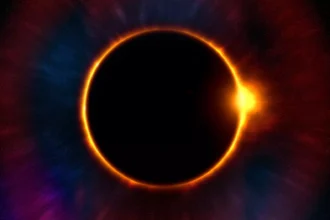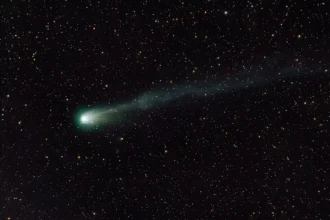As the game of celestial chess plays out in the outer realm of our solar system, a gas giant rises to prominence. Saturn, the grand architect of rings, now claims a new title: the planet with the most moons. With the recent discovery of 62 new irregular satellites orbiting it, Saturn’s tally now stands at an impressive 145, surpassing the combined count of all other planets. What’s more, this marks the first time a planet has been known to have more than a hundred celestial companions.
The Grand Chase for Moons
The perpetual contest for the largest number of moons has traditionally been between the two gas giants, Jupiter and Saturn. The announcement of these new satellites has extended Saturn’s lead by a remarkable 50 moons over Jupiter, which had previously been the frontrunner with 95 moons. This achievement is not just an addition to the astronomical records, but it also paves the way for extensive studies of the cosmos, revealing the dynamic nature of our solar system.
Unveiling the Hidden Moons of Saturn
This momentous discovery is credited to an international team of astronomers led by Edward Ashton, a postdoctoral researcher at Taiwan’s Institute of Astronomy and Astrophysics of the Academia Sinica. The team, comprising scientists from the University of British Columbia, the Harvard Smithsonian Center for Astrophysics, and the Observatory of Besançon, employed innovative techniques to uncover these hidden celestial bodies.
For two decades, the space around Saturn has been under meticulous scrutiny, but the recent success is attributed to a novel technique known as “shift and stack”. Previously used in exploring Neptune and Uranus, this approach enhances the visibility of faint moons by moving a series of images at the speed of a moon’s movement and then stacking them together, thus intensifying the signal.
The use of data from the Canada-France-Hawaii Telescope (CFHT) between 2019 and 2021 allowed the team to detect moons as small as 2.5 kilometers in diameter. Ashton describes the process of tracking these moons as akin to a complex game of dot-to-dot, with the researchers having to connect the appearances of these moons in data with a viable orbit.
You maybe interest to read:
The Paradox of Aquatic Asphyxiation: Can a Fish Drown?
Unraveling the Mystery of Fish Sleep
Ancient Egyptian Zodiac Murals Rediscovered at the Temple of Esna
The Captivating Dance of Irregular Satellites
All the newly discovered moons belong to a category known as irregular satellites, which are thought to have been captured by the planet ages ago. These satellites are distinguished by their wide, elliptical, and inclined orbits, quite different from their regular counterparts.
Irregular satellites tend to form groups with similar orbital inclinations. For Saturn, these are the Gallic, Inuit, and Nordic groups, named after the mythologies from which their respective members draw their names. The Nordic group, characterized by retrograde orbits, is the most populated, with 99 known satellites.
Clues to Saturn’s Collisional History
Astronomers believe these groups are the result of past collisions, with the current satellites being remnants of the initial satellites captured by the planet. The distribution of these orbits, thus, provides an insight into Saturn’s collisional history.
The team’s study of these objects suggests that the multitude of small moons on retrograde orbits stems from the relatively recent destruction (astronomically speaking) of a medium-sized irregular satellite. These fragments now form the majority of the Nordic group.
The discovery of Saturn’s new companions is more than just a triumph in the race for moons; it’s a window into the past, helping us understand the intricate dynamics of our solar system. As we continue to explore the cosmos, who knows what other secrets the rings of Saturn might still hold? After all, space is the final frontier, and the journey has only just begun.
Click on this link to read this article in French version
















